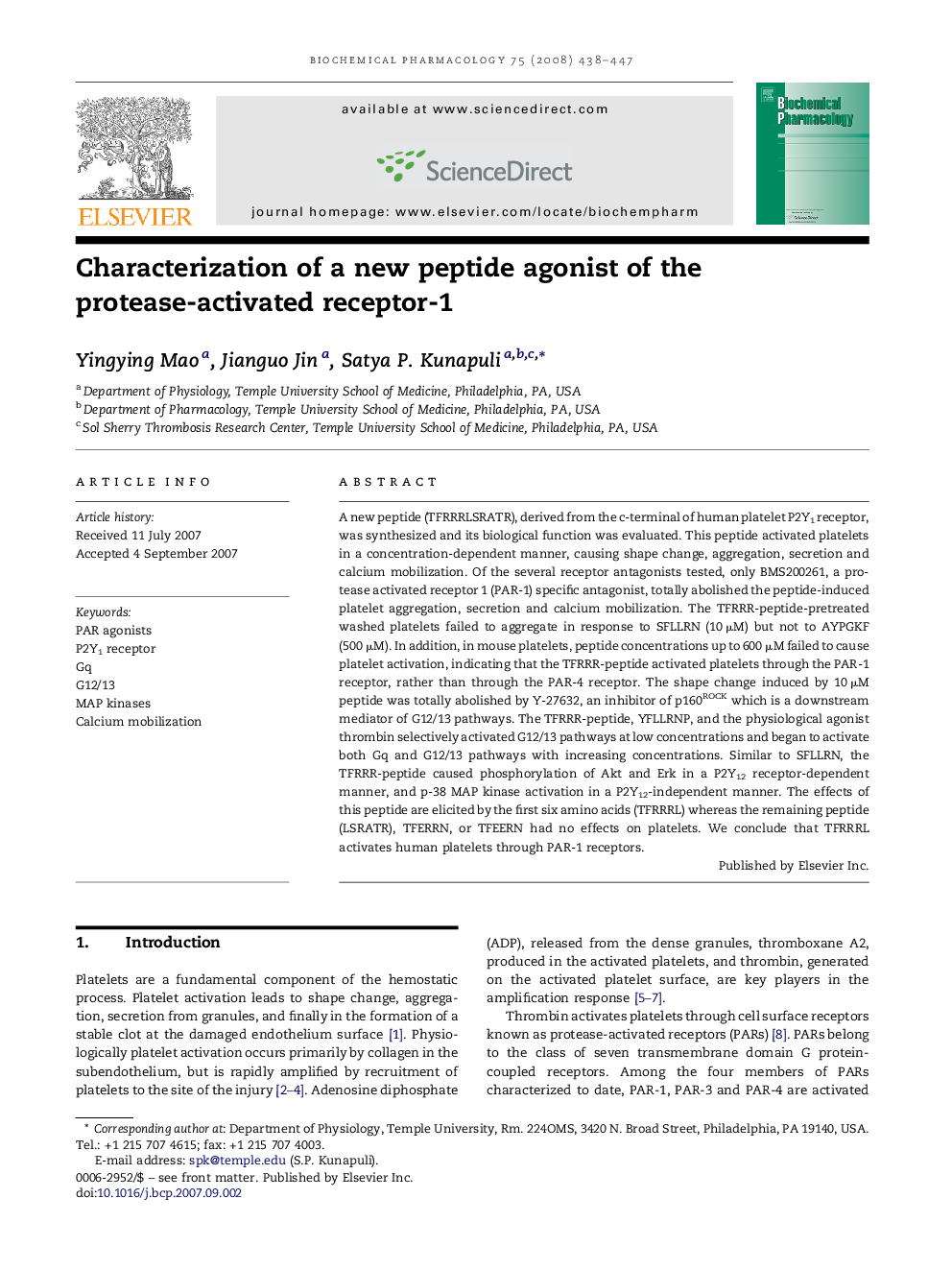| Article ID | Journal | Published Year | Pages | File Type |
|---|---|---|---|---|
| 2514641 | Biochemical Pharmacology | 2008 | 10 Pages |
A new peptide (TFRRRLSRATR), derived from the c-terminal of human platelet P2Y1 receptor, was synthesized and its biological function was evaluated. This peptide activated platelets in a concentration-dependent manner, causing shape change, aggregation, secretion and calcium mobilization. Of the several receptor antagonists tested, only BMS200261, a protease activated receptor 1 (PAR-1) specific antagonist, totally abolished the peptide-induced platelet aggregation, secretion and calcium mobilization. The TFRRR-peptide-pretreated washed platelets failed to aggregate in response to SFLLRN (10 μM) but not to AYPGKF (500 μM). In addition, in mouse platelets, peptide concentrations up to 600 μM failed to cause platelet activation, indicating that the TFRRR-peptide activated platelets through the PAR-1 receptor, rather than through the PAR-4 receptor. The shape change induced by 10 μM peptide was totally abolished by Y-27632, an inhibitor of p160ROCK which is a downstream mediator of G12/13 pathways. The TFRRR-peptide, YFLLRNP, and the physiological agonist thrombin selectively activated G12/13 pathways at low concentrations and began to activate both Gq and G12/13 pathways with increasing concentrations. Similar to SFLLRN, the TFRRR-peptide caused phosphorylation of Akt and Erk in a P2Y12 receptor-dependent manner, and p-38 MAP kinase activation in a P2Y12-independent manner. The effects of this peptide are elicited by the first six amino acids (TFRRRL) whereas the remaining peptide (LSRATR), TFERRN, or TFEERN had no effects on platelets. We conclude that TFRRRL activates human platelets through PAR-1 receptors.
